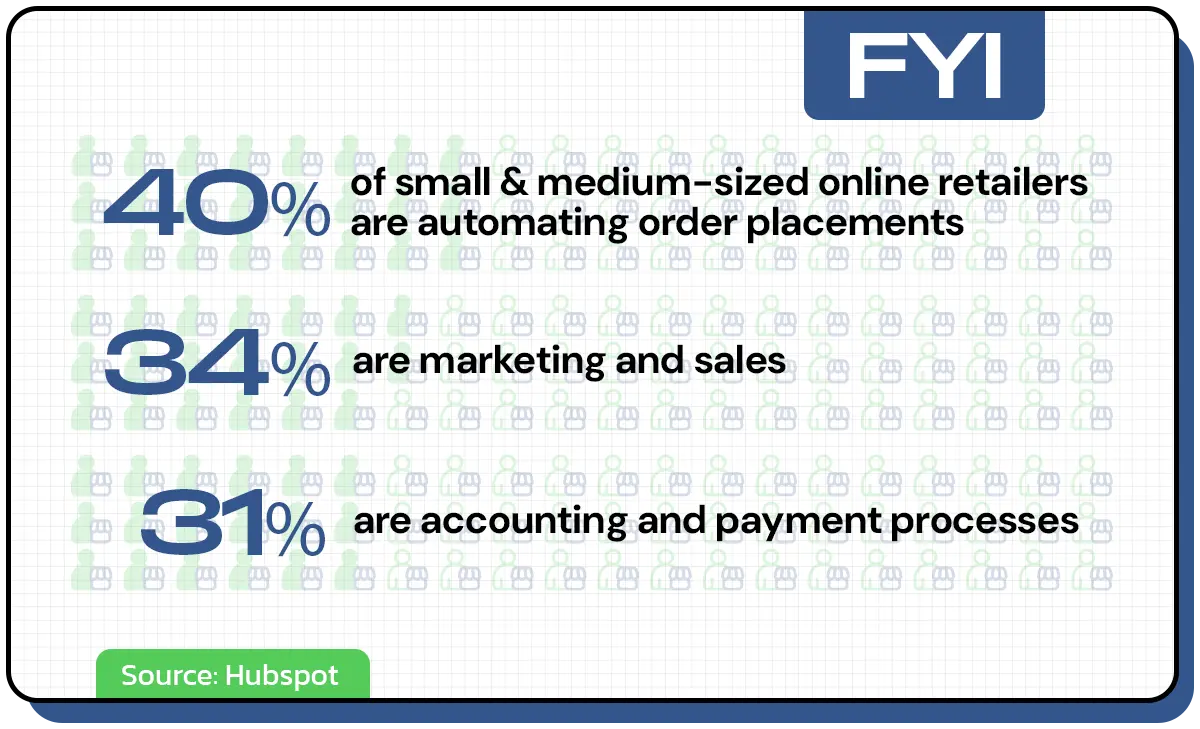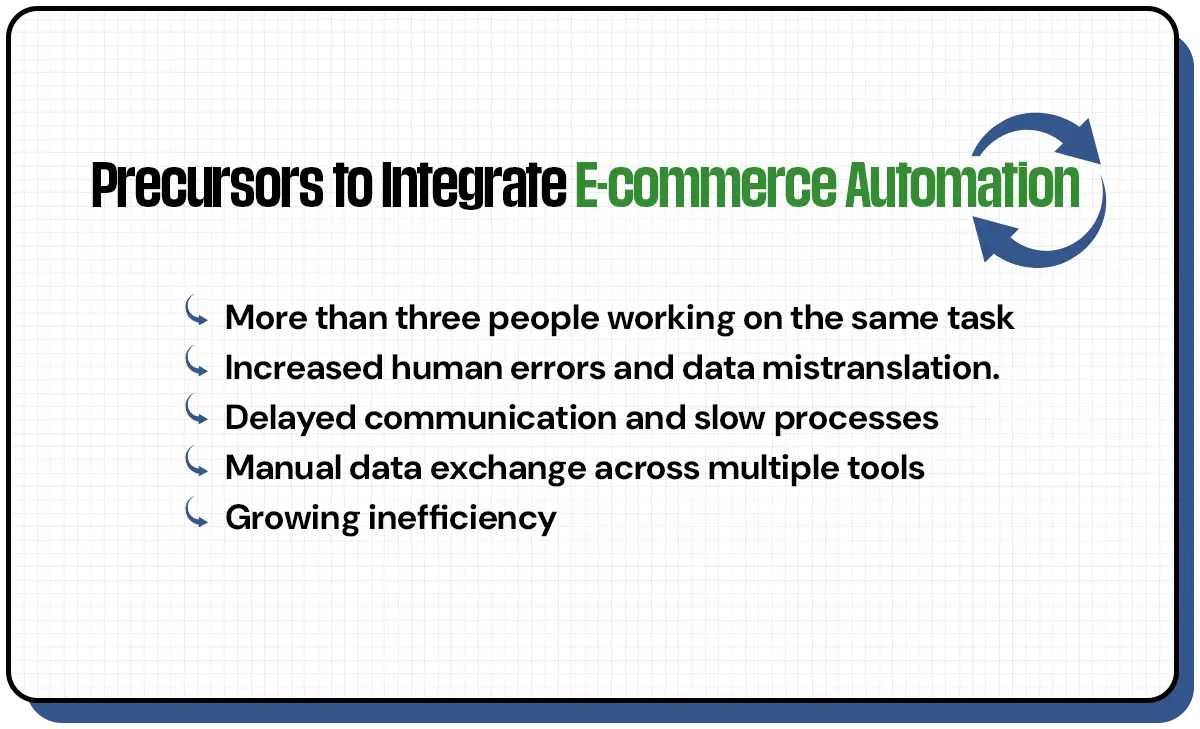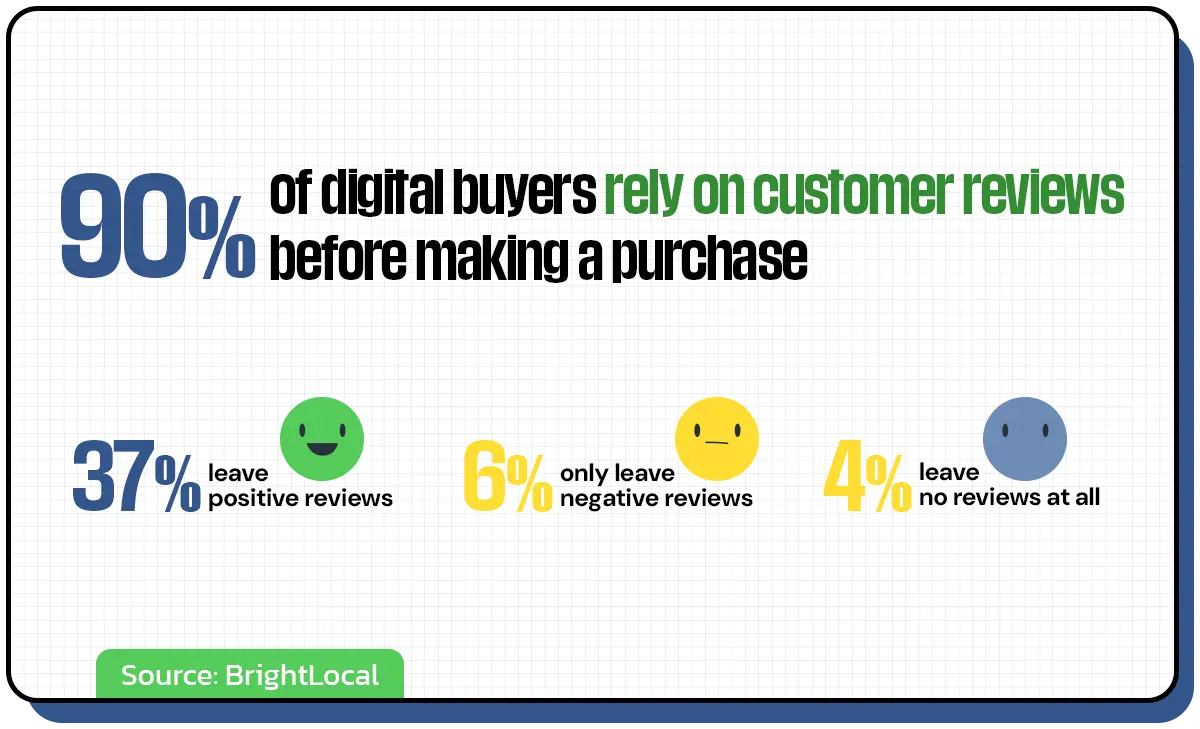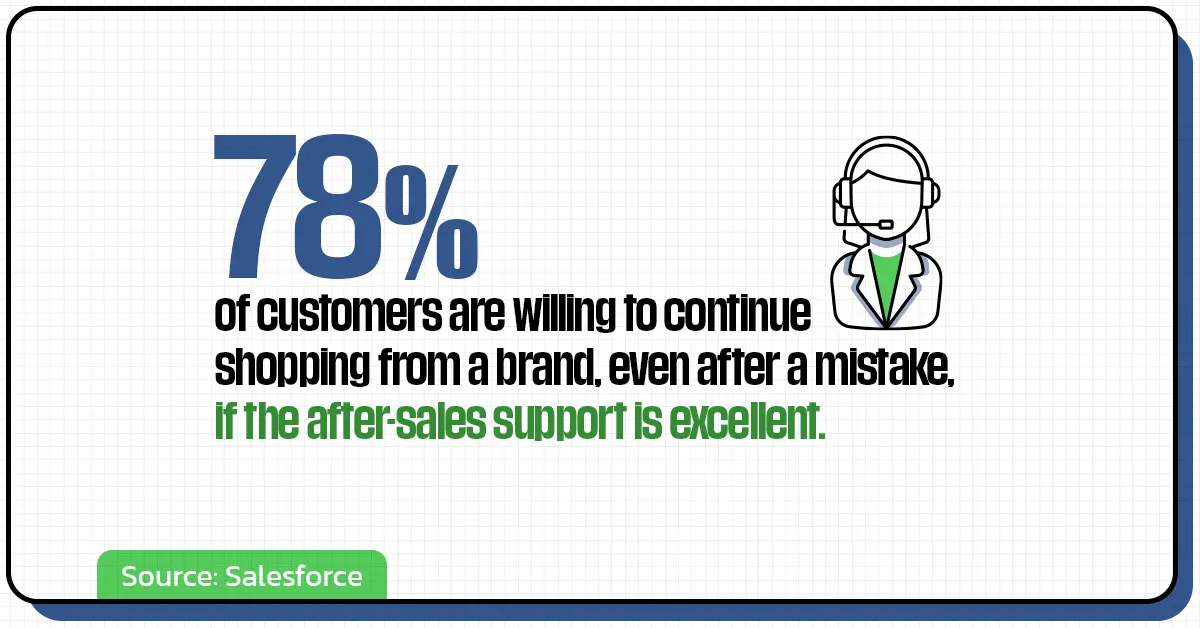Save Costs, Time, and Reputation with E-commerce Automation (Part 1)
Digital buyers continue to grow in number. There are 80 million more digital buyers in 2023 — making up around 33.3% of the world population. This indicates a 3.1% year-over-year growth as compared to 2022. Interesting.
The COVID era fueled 10 years of e-commerce growth in only 90 days, underlining the crazy demand for online shopping.
Simply speaking, one out of every three people around you is a digital buyer.
This should not come as a surprise, as internet connectivity continues to localize global digital buying. With that, you get an enormous opportunity to grow your e-commerce business and capitalize on the demand.
But two challenges arise here:
How to deliver unique customer experiences online amid crazy market competition?
How to decrease the cost of doing e-commerce business?
E-commerce automation is your tool to hit two targets with one arrow. You can ensure valuable online buying experiences while also reducing your costs. 76% of businesses already agree and use automation in their daily operations.

Important note: We are not focusing solely on marketing automation but also on process automation for fast-tracking the entire business workflow.
Without any fast and quality-driven processes, your business growth will stay still. The time you spend on manually performing essential but repetitive tasks is insane.
You could’ve spent all the lost hours on acquiring new customers, implementing marketing plans, tapping new marketplaces, dealing with trusted suppliers, sourcing unique products, and eventually expanding your business.
So, when to automate?
Finding out what and when to automate is the first step in any e-commerce automation process:

What can you automate in your e-commerce business?
Automating your e-commerce processes helps eliminate high-effort tasks and simplify processes that usually overwhelm your workforce.
Let's find out things or processes that you should automate to save more time, costs, and efforts and grow big on revenue.
Keep Learning: Why Automate Your eCommerce Business? A Different Perspective
Inventory and order management for happier buying experiences
Selling a product only to discover it's out of stock is a nightmare. New inventory usually arrives in two or three weeks further causing month-long delays for the customer who has already made a payment. Your customer will hate you.
You can avoid such situations by ensuring full transparency on low-stock goods, triggering notifications, or automating restocking.
Your system can display the accurate stock count in the product description. For out-of-stock items, you can auto-hide products from the catalog to enhance customer experience.
With e-commerce automation, businesses can stay true to customers and deliver a happy and reliable shopping experience by
- Synchronizing inventory to update stock levels across the multi-channels.
- Selling safely without the fear of overselling stock that is unavailable.
- Delivering on time by navigating customer orders to the nearest warehouse for faster product dispatch and delivery.
- Analyzing and predicting future stock demand enables your business to fulfill the demand and drive more revenue.
- Raising a purchase order when your stock declines below optimal levels requires reordering. This helps avoid stock-outs and missed growth opportunities.
Automation empowers you to meet your customers’ expectations during the checkout process, for example, delivering accurate orders on a promised day and date.
2. Build resilient supplier partnerships
The disrupting global supply chain industry does not spare even a week’s delay in the order’s delivery, impeding your business growth.
Maintaining a resilient fulfillment process relies on trusted suppliers. However, partnering with and integrating these suppliers into your supply chain comes with time and money constraints.
Automation plays a business-critical role in eliminating repetitive tasks but also achieving several notable feats:
- Enhanced supplier interaction via seamless processes to obtain purchase orders, send invoices, receive payment, and more. This encourages suppliers to offer competitive prices due to easy business collaboration with your organization.
- Mitigation of rogue buying. Contracting with non-approved suppliers or those bypassing the onboarding process face challenges like unauthorized transactions and non-compliance. Automation hence prevents illegal activity and ensures compliance with approved supplier standards.
- Error reduction through supplier data centralization and consistent format maintenance. Many suppliers integrate data into the system, contributing to error-free data and overall uniformity.
Data generated in the process helps in tracking, evaluating, and managing supplier performance and operational accuracy in challenging times — contributing to a robust and resilient supply chain.
3. Improve accuracy and manage damaging reviews!
Implementing automation in your e-commerce operations is a strategic move to ensure meticulous execution of tasks, thereby improving accuracy.
Manual processes may be manageable for a small inventory and order bulks, but detrimental to businesses with large inventory and orders.
A staggering 62% of merchants believe that human errors and inaccurate fulfillment majorly stem from manual processes. A mistyped address, order number, or SKU can result in lost or delayed orders. This incurs costs but also risks negative reviews stopping up to 94% of online shoppers from making a purchase.

See? Getting good reviews is easy if you provide them with good customer care and experience.
However, not all buyers leave feedback, so manually reaching them is inefficient. Now what? Process automation comes to the rescue and enables systematic follow-ups for customer feedback. Many brands typically send emails around 30 days after purchase to get feedback.
Interestingly, 68% of customers will be more than willing to leave a review if they’re asked. Ask away!
Despite best efforts, negative reviews may occur. E-commerce automation tools prove time-critical in urgent situations by notifying you about a negative review and letting you respond quickly — saving a customer and your day.
This not only eliminates reputation-damaging costs but also shows loyalty to your customers.
4. Email reminders to build personalized consumer experiences
Among the most widely employed automation strategies, sending automated email reminders is the most common.
The average abandonment rate for online shopping carts is 69.6%. The only remedy is sending automated abandoned cart notifications via email.
Online sellers, retailers, and business owners are always looking to engage and grow their current customer base. To your surprise, the cost of acquiring new customers is 5 times higher than retaining existing ones.
But how can you retain and engage existing customers? By now and in fact, you should know e-commerce automation is your business’ only savior.
You can implement automated email sequences to strategically interact with your customers in response to their actions or inaction such as:
Abandoned carts
Sending email alerts to customers who leave items in their online shopping carts without completing a purchase.
Wishlist activity
Targeting customers who add products to their wishlist but didn’t make a purchase.
Purchase completion
Acknowledging and congratulating customers who successfully complete a purchase.
Inactivity alerts
Sending follow-up emails to inactive customers as an effort to re-engage them.
Product page views
Capitalizing on customer interests by sending targeted emails after they’ve viewed specific product pages.
Subscription renewal
Providing reminders for subscription renewals.
Additionally, automated emails may also be tailored based on demographic information, such as a subscriber's gender, location, or birthday.
These personalized and timely email sequences help customer retention by rekindling interest and maintaining a meaningful connection.
These stats are mind-blowing. It’s time to automate your emailing already!
Source
5. Customer support for a bigger business reputation
Hands-on customer service is pivotal in retaining customers and saving your reputation from declining. An unattended, frustrated customer can wreak havoc on your growing business and its market position.
But the good news is;

You can deliver excellent customer service through automation, streamlining ticket management, quick FAQ responses, queuing, and more.
Customer support is very time-consuming and hectic. E-commerce brands dedicate long hours every week in response to customer inquiries. Automation significantly reduces the need for extensive need for prompt responses.
For instance, chatbots are a powerful automation tool that provide real-time responses to customer queries.
67% of consumers engaged with a chatbot reported a neutral or positive experience. Positive sign!
There are many ways you can automate the overall customer experience, such as:
- Sending auto-response messages after receiving queries outside regular business hours, ensuring immediate support.
- Segmenting customers based on their overall spending and offering personalized incentives like enrolling them into a loyalty program (increasing 90% chances of customer loyalty)
- Monitoring negative product reviews in real-time, enabling timely responses and quick conflict resolution.

Uh-huh! The story isn’t over yet. There are other processes you can automate for your e-commerce business. Hand-picked, diligently researched, just for you. Stay tuned for part 2 of 5 processes you can automate for greater business efficiency and revenue.
Here is the Part 2 of Save Costs, Time, and Reputation with E-commerce Automation
You might also like…

Is 2024 The Year of Software Development Crisis?

5 Truths Behind the Software Developer Shortage 2024: Whom to Blame?
